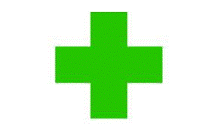Plant Health Program, Doctor of
First Advisor
Gary Hein
Date of this Version
4-2019
Abstract
Paradigm shifts occur periodically in the sciences. Proposed paradigm shifts offer opportunities to reexamine extant paradigms and evaluate new ones. Soil science experienced a controversy resembling a proposed paradigm shift in the late 1990s and early 2000s when it grappled with the idea of soil quality (SQ). The most contentious points in the SQ debates were (1) the word “quality” itself and designing a functional definition, (2) identifying appropriate soil quality indicators, (3) the integration of soil quality indicators, and (4) the interpretation of soil quality indicators. The latter three disagreements were rooted in the established, fundamental, soil science paradigm. The latter three were argued using inherent and dynamic soil properties and the statistical integration of those properties. Defining SQ, however, was much more complicated. While the ‘quality soil management vs soil quality management’ debates of the late 1990s were never resolved, the terms SQ and subsequent term soil health (SH) are still used today. Soil quality and SH have been institutionalized by several groups, including the U.S. government, private industry, and academic institutions. The concept should not be erased from the soil science vernacular. However, if the scientific community is to continue to use these terms, these concepts, and the debates of the late 1990s, must be revisited.
Advisor: Gary L. Hein


Comments
A Doctoral Document Presented to the Faculty of The College of Agricultural Sciences and Natural Resources, Un iversity of Nebraska-Lincoln, In Partial Fulfillment of Requirements For the Degree of Doctor of Plant Health, Major: Doctor of Plant Health, Under the Supervision of Professor Gary L. Hein Lincoln, Nebraska April 2019